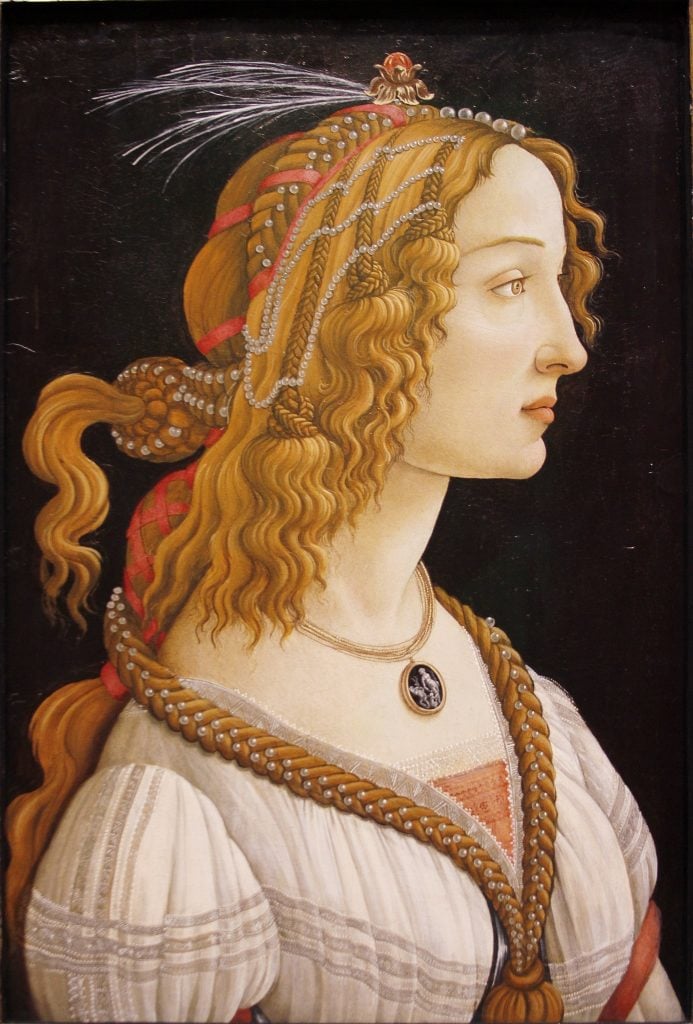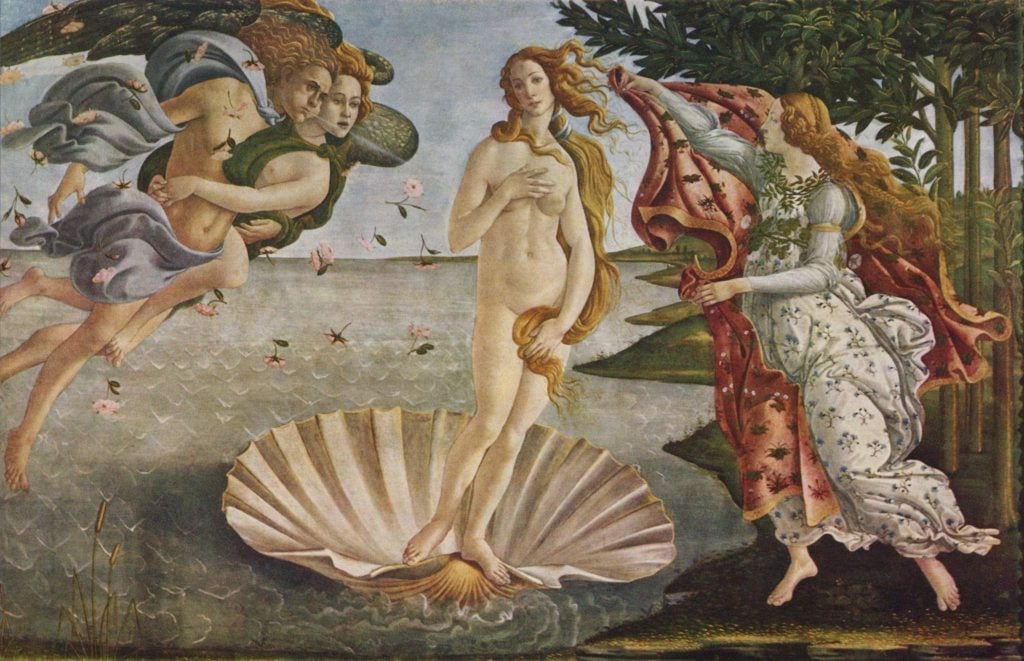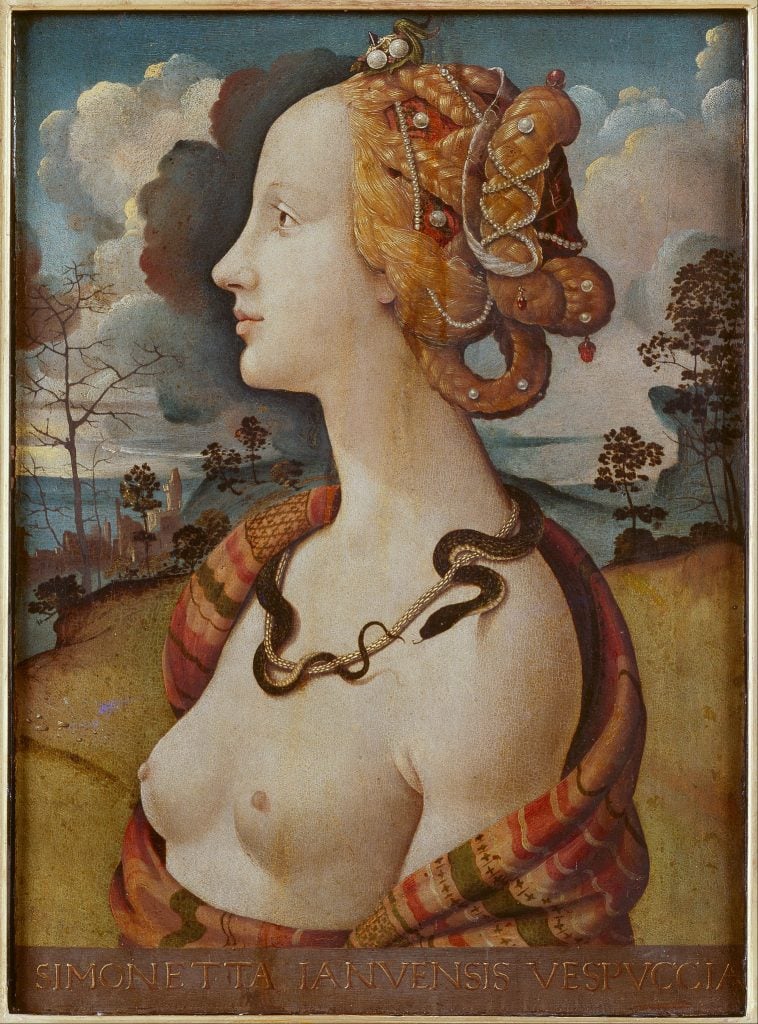Art World
Art Bites: Who Was Simonetta Vespucci, Botticelli’s Enduring Muse?
Vespucci so enraptured the painter that he requested to be buried at her feet.

Vespucci so enraptured the painter that he requested to be buried at her feet.

Tim Brinkhof

Like many famous artworks from the Italian Renaissance, Sandro Botticelli’s The Birth of Venus (1485) has a larger-than-life quality. The painting, which depicts the Roman goddess of beauty emerging from a shell accompanied by other deities, has been described as an allegory of love and rebirth, its central figure transcending the offensive, sensual nudity of human beings in favor of godlike purity and nobility.
However, this interpretation is only part of the story. Like other Renaissance artists, Botticelli worked with a select group of models, and the Venus of this work is allegedly based on his favorite, one Simonetta Vespucci.

Sandro Botticelli, The Birth of Venus (c. 1845). Photo: Uffizi Gallery, The Yorck Project.
A noblewoman thought to have hailed from either Genoa or Porto Venere (Venus Harbor), Vespucci—a cousin-in-law of the famed explorer Amerigo Vespucci—moved to Florence with her husband Marco around 1469. Despite being only 16 years old, she immediately earned a reputation as the most beautiful woman in Italy as artists flocked to capture her visage.
Botticelli was not the only artist in Florence who asked Vespucci to be his model. During her brief stay in the city, she also sat for portraits by Piero di Cosimo, who once painted her as Cleopatra, and served as the inspiration for the poems of Luigi Pulci and Lorenzo the Magnificent.
Another major fan was Lorenzo di Piero de’ Medici, who was the head of the Medici banking family and, following the assassination of his brother Giuliano, de facto ruler of the Florentine Republic from 1478 to 1492. In life, Giuliano fought with Lorenzo over Vespucci’s affection, showering her with precious gifts and, on one occasion, entering a citywide jousting tournament with a banner painted by Botticelli calling Vespucci “La Sans Pareille” or “The Unparalleled One.”

Piero di Cosimo, Portrait of Simonetta Vespucci (1490). Photo: Google Arts Project.
Still, Botticelli may well have been Vespucci’s most ardent admirer, ensuring that history would associate her appearance with that of the goddess Venus herself. Interestingly, however, Botticelli did not complete The Birth of Venus until around 10 years after Vespucci’s death. While the artist lived until the (relatively) ripe old age of 65, dying in 1510, Vespucci passed away suddenly when she was only 22. Historical documents reveal that after her death, the entire city of Florence went into a month-long period of mourning.
It is worth noting that not all art historians believe Vespucci served as the inspiration for The Birth of Venus. Historian Felipe Fernández-Armesto has argued that the “vulgar assumption” that she was the model for “all his famous beauties seems to be based on no better grounds than the feeling that the most beautiful woman of the day ought to have modeled for the most sensitive painter.”
Then again, the facial features of Botticelli’s Venus match those of the portraits we know Vespucci sat for. We also know Botticelli loved Vespucci so much that he requested to be buried at her feet after his death. Today, his grave is indeed located next to Vespucci’s, at Florence’s Church of Ognissanti.
What’s the deal with Leonardo’s harpsichord-viola? Why were Impressionists obsessed with the color purple? Art Bites brings you a surprising fact, lesser-known anecdote, or curious event from art history.